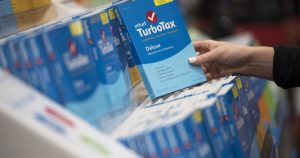Even after discovering that my SodaStream would explode if I placed gin lemonade in it, I still felt that this cocktail would hardly be a challenge. I’d made a cake of pickles, for God’s sake. Surely this was child’s play.
I felt the same way when I bought a $90 benchtop centrifuge from Amazon that had similar specs to the Spinzall and a Micro CO2 regulator for SodaStream tanks from the Weekend Brewer. Add a sturdy ball lock line assembly hose for brewing and I was in business. I even dreamt of opening a bar in my backyard called Pre-existing Conditions, which would serve a cocktail called Sunday Brinner.
The juicing effort went swimmingly, mainly because I was assisted by excellent instructions that arrived with my centrifuge.
“From the heart in operation, it is strictly prohibited to play boot lid,” the safety information assured me.
“Ah,” I thought, skimming the page as I gathered all of my materials on my kitchen counter.
“Will join the centrifugal separation material to insert the machine respectively for the centrifugal tube,” the instructions read.
“I see,” I thought, spilling lemon juice into the center of the machine as I transferred it from my bowl to the test tubes. Why test tubes? The budget centrifuge did not have a method to make large batches of clarified juices but instead required me to pour minute amounts of liquid into a handful of tiny tubes, which I then inserted into the machine one at a time. Handily, this only allowed me to make half a cocktail recipe at one time.
After locking and loading my tubes, I wasn’t sure at what voltage or speed to run the thing, but shut the lid and span the two knobs as far to the right as they would go.
The gray, microwave-sized hunk began vibrating on my kitchen counter so violently that it started migrating toward the stove. I held it for a few moments, but it turns out I’m no better with centrifuges than I am with babies and it continued to wail. Eventually I rearranged the test tubes so the juiciest ones sat across from one another, which seemed to soothe the machine into submission. A few minutes later, I had made practically clear juice. The regular lemon juice looked vaguely urinal compared to this pristine liquid, and I scoffed at all the plebs in the world drinking opaque juice while I held this new power of creation.
I held it for a few moments, but it turns out I’m no better with centrifuges than I am with babies and it continued to wail.
The real fun came when I’d mixed together all the ingredients and was ready to carbonate the concoction. After a brief discussion with Engadget managing editor and avid home brewer Terrence O’Brien about not exceeding the amount of pressure that might cause an explosion (eh, that’s what safety goggles are for), I was ready.
Except, as I’ve written before, I spend my life generally having trouble with three-dimensional objects (dropping a full glass of water for no reason is called “pulling a Megan” in my house). Enter weeks of trying to connect the micro-regulator to the cartridge adapter to the soda CO2 tank input adapter to the barb output adapter to the hose to the carbonation tank to the empty soda bottle that Hada recommended using. And no, of course I did not cry.
Finally, after several lengthy talks with Engadget staff who are more crafty than I, and the addition of a missing part from the Weekend Brewer, it was time. I poured my fresh cocktail into the soda bottle, set the dial and started dispensing.
Crack! The soda bottle immediately puffed up. Whoosh! A stream of cold air flew uncontrollably out the side of the regulator. Woof! My dog, who had come to see what all the commotion about, barked loudly as the air blasted straight in his face.
But it was all worth it because as I unscrewed the various devices, I knew I’d taste the nectar of success, a carbonated gin lemonade all my own.
Alas, it was flat. And no matter how many more times I tried (Hada had said it takes at least three), only a few bubbles burbled from the bottom of my bottle. With one hand, I poured my weeks-long project down the sink, and with the other I slopped some gin and juice into a dirty glass. I needed a drink.
Recipe: Sunday Brunch Cocktail
By Kendra Hada
Ingredients:
- 1.75 ounces Ford’s gin
- 0.5 ounces clarified orange juice
- 0.25 ounces Saint Germaine
- 0.25 ounces quinine lemon cordial
- 0.25 ounces clarified lime juice
- 3.25 ounces H2O
- 4 drops saline (20 percent salt solution)
Instructions:
- Good luck.
Images: Michael Marquand (Spinzall); Existing Conditions (Sunday Brunch cocktail); Megan Giller (Nurxiovo centrifuge)
All products recommended by Engadget are selected by our editorial team, independent of our parent company. Some of our stories include affiliate links. If you buy something through one of these links, we may earn an affiliate commission.

Comments

58
Shares



